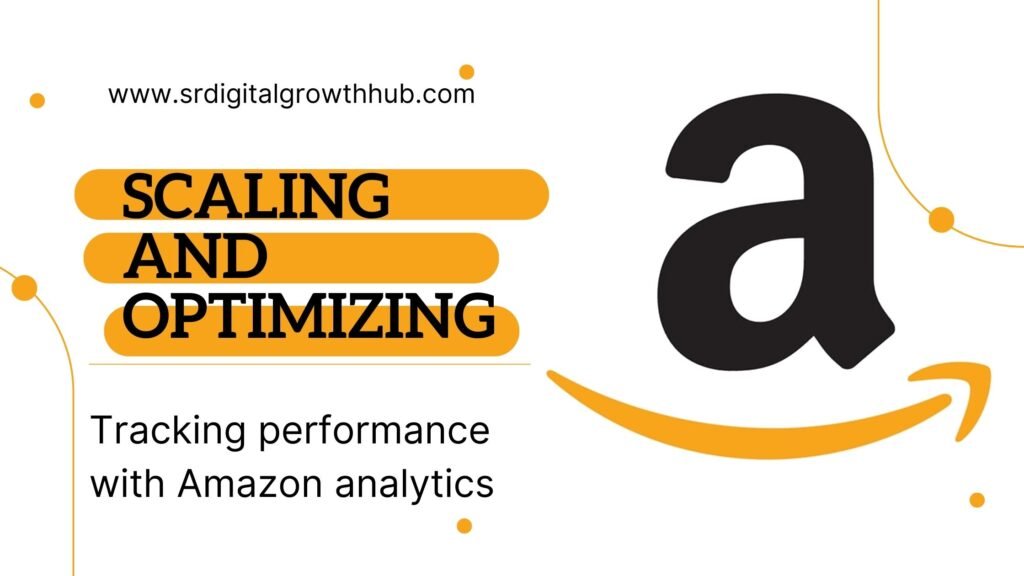
Ever found yourself scrolling through Amazon, wondering how others turn product recommendations into a steady income stream? You’re not alone. Thousands of Saudi entrepreneurs are discovering the untapped potential of Amazon’s affiliate program right now.
Starting your Saudi Amazon affiliate business isn’t just possible—it’s surprisingly straightforward when you know the steps. The market is primed for locals who understand Saudi shopping preferences and can authentically connect with regional consumers.
What if you could build a passive income source that pays you while you sleep, all while sharing products you genuinely believe in? The five steps I’m about to share have helped hundreds of Saudi affiliates go from complete beginners to earning their first commission checks.
But here’s the thing most “gurus” won’t tell you about launching in this market…
Understanding the Saudi Amazon Affiliate Program

How Amazon’s affiliate program works in Saudi Arabia
Amazon’s affiliate program in Saudi Arabia (officially known as Amazon Associates) is surprisingly straightforward once you grasp the basics. When you join, you’re essentially becoming a partner who earns commissions by promoting Amazon products to your audience.
Here’s the simple flow: you sign up, get approved, recommend products using your unique affiliate links, and make money when people buy through those links. The Saudi version operates on the same core principles as its global counterparts, but with localized features for the KSA market.
Your main job? Driving traffic to Amazon.sa through your promotional efforts. This could be via a blog, YouTube channel, social media accounts, or any platform where you’ve built an audience. Each time someone clicks your link and makes a purchase within 24 hours, you earn a percentage of that sale.
The tracking happens automatically through cookies that Amazon places when someone clicks your link. No need for complicated tech setups on your end – Amazon handles all the tracking, payments, and product fulfillment.
What makes the Saudi program particularly interesting is its timing – it’s relatively new compared to markets like the US or UK, meaning there’s still plenty of room for newcomers to establish themselves before the space gets crowded.
Benefits of starting an affiliate business in the Saudi market
The Saudi e-commerce landscape is booming, and now’s the perfect time to jump on this opportunity. Here’s why starting your Amazon affiliate business in Saudi Arabia could be your smartest move yet:
Growing market with less competition
The Saudi e-commerce market is expanding rapidly, with projections showing it reaching $13.9 billion by 2025. Unlike more saturated markets, the affiliate space in Saudi Arabia isn’t overcrowded yet. This means you can still carve out your niche without facing the intense competition seen in Western markets.
Rising internet and smartphone penetration
With over 97% internet penetration and one of the highest smartphone usage rates globally, your potential audience is already online and shopping. Saudi consumers are increasingly comfortable with online purchases, creating the perfect environment for affiliate marketers.
Vision 2030 impact
Saudi Arabia’s Vision 2030 initiatives are accelerating digital transformation throughout the kingdom. This government-backed push toward a digital economy directly benefits e-commerce businesses and, by extension, affiliate marketers like you.
Higher average order values
Saudi consumers typically have strong purchasing power, leading to higher average order values compared to many other markets. This translates directly to better commission earnings for the same amount of marketing effort.
Localized advantage
If you understand Saudi culture and consumer preferences, you have a major edge over international affiliates trying to break into this market. Your insights into local buying habits and seasonal trends can help you create more relevant content that converts better.
Multiple content opportunities
The Saudi market offers diverse content angles – from tech reviews to Islamic products, luxury goods to everyday essentials. This variety gives you flexibility in choosing niches that align with your interests and expertise.
Year-round shopping seasons
Beyond global shopping events like Black Friday, Saudi Arabia has unique shopping seasons around Ramadan, Eid celebrations, and back-to-school periods. These additional peak shopping times mean more commission opportunities throughout the year.
Key requirements to join the program
Getting started with Amazon’s affiliate program in Saudi Arabia isn’t complicated, but there are specific requirements you’ll need to meet. Here’s what you need to know before applying:
A functional website or active social media presence
Amazon requires you to have an established platform where you’ll promote products. This can be a blog, website, YouTube channel, or active social media accounts with a decent following. They’re looking for evidence that you have an audience to market to.
Valid identification and tax information
You’ll need to provide personal identification and tax information during registration. For Saudi residents, this includes your national ID or iqama details. Non-residents may need to provide alternative documentation depending on their country of residence.
A Saudi bank account
To receive your commission payments, you’ll need a Saudi bank account. Amazon transfers payments directly to this account, so setting this up before applying will streamline your approval process.
Content in Arabic or English
Your platform should feature content in either Arabic or English (or both). While content in other languages isn’t prohibited, Amazon Saudi Arabia primarily serves Arabic and English-speaking audiences, so your content should reflect this.
Quality content standards
Amazon reviews your platform to ensure it contains original, quality content that provides value to users. Sites with minimal content, copyright violations, or primarily adult/offensive material will be rejected.
Compliance with program policies
You must adhere to Amazon’s operating agreement, which prohibits practices like:
- Claiming false discounts
- Using Amazon trademarks inappropriately
- Creating a sense of urgency through false claims
- Generating automated clicks on your affiliate links
Minimum sales requirement
While not a requirement to join, be aware that Amazon expects you to generate at least 3 qualified sales within your first 180 days. If you don’t meet this threshold, your account may be subject to review.
Active engagement
Once approved, you need to remain active by regularly updating your content and generating consistent traffic to your affiliate links. Dormant accounts risk deactivation.
Earning potential and commission structure
The money question—how much can you actually earn with the Saudi Amazon Affiliate program? The answer depends on several factors, but understanding the commission structure is your first step toward maximizing your earnings.
Amazon’s commission rates in Saudi Arabia vary by product category, ranging from around 1% to 10%. Here’s a breakdown of what you can expect:
| Product Category | Commission Rate |
|---|---|
| Electronics | 1-2% |
| Home & Kitchen | 3-4% |
| Beauty Products | 4-6% |
| Books | 4-5% |
| Fashion | 4-7% |
| Luxury Beauty | 7-10% |
These percentages might seem small at first glance, but they add up quickly when you’re driving volume. Remember, you’re earning a percentage of the entire purchase, not just the specific product you linked to. If someone clicks your link for a $20 item but ends up buying $200 worth of products, you earn commission on the full $200.
Your earnings potential is influenced by four main factors:
Traffic volume: More visitors mean more potential clicks and purchases. A site getting 10,000 monthly visitors obviously has higher earning potential than one with 1,000 visitors.
Conversion rate: This is the percentage of visitors who actually make a purchase after clicking your link. Average conversion rates range from 1-3%, but niche sites with targeted content can achieve 5% or higher.
Average order value: Promoting higher-priced items can significantly impact your earnings. A 3% commission on a $500 purchase ($15) is much better than 3% on a $50 purchase ($1.50).
Product categories: Strategic focus on higher-commission categories can boost your earnings without necessarily increasing your traffic.
Based on these factors, here’s what realistic monthly earnings might look like:
- Beginner (1,000 monthly visitors, 1% conversion, $50 avg order): $15-25/month
- Intermediate (10,000 monthly visitors, 2% conversion, $100 avg order): $300-500/month
- Advanced (50,000+ monthly visitors, 3% conversion, $150 avg order): $2,000-3,000+/month
Top affiliates in Saudi Arabia can earn $5,000+ monthly, but this typically requires a well-established platform with significant traffic and optimized conversion strategies.
Remember that earnings often start slow and build over time as you grow your audience and refine your approach. Many successful affiliates report that their earnings followed a hockey stick pattern—minimal returns for months before seeing exponential growth once they gained traction.
Selecting Your Niche and Products

Researching profitable niches in the Saudi market
Finding the right niche in Saudi Arabia’s Amazon Affiliate landscape can make or break your business. The Saudi e-commerce market has its own unique characteristics that you need to understand.
Start by looking at what Saudi consumers are actually buying online. Electronics, fashion, and beauty products typically perform well, but don’t just follow global trends. Saudi shoppers have specific preferences influenced by local culture, climate, and lifestyle.
Religious products, for example, see huge demand spikes during Ramadan and Hajj seasons. Home decor with Arabian aesthetics sells consistently well year-round. And don’t overlook the growing fitness and wellness sector as health consciousness rises among younger Saudis.
Pay attention to seasonal trends too. Air conditioners and cooling products fly off virtual shelves during the scorching summer months, while winter brings different opportunities.
The key is digging deeper than surface-level observations. Use these strategies:
- Check Amazon.sa’s bestseller lists regularly
- Join Saudi Facebook groups and forums where people discuss their purchases
- Monitor trending hashtags on Twitter and Instagram in Saudi Arabia
- Survey friends and family about their online shopping habits
Remember that the Saudi market is still developing. This means you can sometimes find profitable niches with less competition than in more mature markets like the US or UK.
Identifying high-demand products with good commission rates
Not all products are created equal in the affiliate game. The perfect product hits that sweet spot: high demand and generous commission rates.
First, understand Amazon’s variable commission structure. Rates typically range from 1% to 10% depending on the product category. In Saudi Arabia, these categories often offer better commissions:
- Luxury Beauty: 10%
- Furniture: 8%
- Home Improvement: 8%
- Pet Products: 8%
- Apparel: 7%
Now, combining this knowledge with demand insights is where the magic happens. Look for products that meet these criteria:
- Price point between 200-2000 SAR (neither too cheap nor too expensive)
- Items that need replacing or replenishing
- Products with accessories people often buy alongside them
- Items with strong review counts and ratings on Amazon.sa
Gaming accessories have proven particularly profitable in Saudi Arabia, with the gaming market booming and offering decent commission rates. Similarly, smart home devices are gaining traction as Saudi homes become increasingly connected.
A smart approach is finding products that Saudi consumers want but struggle to get information about in Arabic. Creating content that bridges this knowledge gap positions you as a valuable resource.
Avoid products with razor-thin margins or categories where Amazon offers minimal commissions (like basic electronics at 1-2%). The math simply doesn’t work out unless you’re driving massive traffic.
Analyzing competition in your chosen niche
Before fully committing to a niche, you need to scope out the competition. Who else is trying to capture the same audience you’re targeting?
Start by searching Google for your main keywords in both English and Arabic. Pay attention to:
- How many affiliate sites appear in the results
- The quality of their content and site design
- Whether they’re specifically targeting Saudi consumers
- If they’re ranking for multiple related keywords
Check their social media presence too. Strong competitors will have established Instagram and Twitter accounts with engaged Saudi followers.
But don’t let competition scare you off immediately. Analyze it objectively:
| Low Competition | High Competition |
|---|---|
| Few affiliate sites | Many established affiliate sites |
| Poor content quality | High-quality, detailed content |
| Generic approaches | Saudi-specific approaches |
| Low social media presence | Strong social following |
Finding moderate competition is actually a good sign. It proves there’s money to be made in the niche while still leaving room for you to enter with a fresh approach.
Where you want to be careful is with niches dominated by major product review sites with huge budgets and teams. Going head-to-head with them from day one is an uphill battle.
Instead, look for underserved sub-niches. Rather than targeting “smartphones” broadly, you might focus on “smartphones for Saudi students” or “best phones for desert conditions” – angles that bigger sites often overlook.
Finding the balance between passion and profitability
The age-old question: should you follow your passion or the profit? The truth is, you need both.
Pursuing a niche solely because it seems profitable but holds zero interest for you leads to burnout. You’ll struggle to create authentic content consistently when you don’t care about the topic.
Conversely, choosing a niche you love but that has minimal profit potential in Saudi Arabia means working hard for little return.
The sweet spot lies at the intersection of these factors:
- Topics you genuinely find interesting
- Areas where you have some knowledge (or willingness to learn)
- Niches with proven profit potential in Saudi Arabia
- Subjects that allow for long-term content creation
Think about your daily life and interests. Are you a tech enthusiast who keeps up with the latest gadgets? A parent concerned about quality children’s products? A fitness buff trying different equipment?
Your personal experience gives you insights that purely profit-driven affiliates lack. Use this to your advantage.
For instance, if you’re passionate about cooking, you might create content around kitchen appliances suited to preparing traditional Saudi dishes. Your authentic enthusiasm will shine through in your content, building trust with your audience.
The most successful Saudi affiliate marketers find this harmony between personal interest and market demand, creating a sustainable business they actually enjoy running.
Tools for market research in Saudi Arabia
Having the right research tools makes identifying profitable niches infinitely easier. Here are the essential ones for the Saudi market:
SEMrush or Ahrefs – These paid tools let you analyze competitor websites, check keyword volumes specific to Saudi Arabia, and track ranking changes. Worth the investment as you get serious.
Google Trends – Free and invaluable for comparing interest in different products over time in Saudi Arabia. Be sure to filter results specifically for the Saudi region to get accurate insights.
Amazon.sa Bestsellers – A free goldmine of data showing exactly what’s selling right now across different categories.
Social Listening Tools – Brandwatch or even free options like TweetDeck help you monitor conversations around products in Saudi Arabia.
Facebook Audience Insights – Reveals interests and behaviors of Saudi audiences when you select Saudi Arabia as your target location.
SimilarWeb – Offers traffic analysis of competitor sites so you can see where Saudi visitors are coming from.
For Saudi-specific insights, also consider:
- Following relevant hashtags on Twitter where Saudi consumers discuss purchases
- Joining Saudi deal-sharing Telegram groups
- Monitoring popular Saudi forums like adslgate.com
Don’t forget offline research too. Visiting physical stores in Riyadh, Jeddah or your local city provides real-world context on product popularity and pricing.
Using these tools strategically helps you validate your niche ideas before investing significant time. For example, if Google Trends shows declining interest in a product category you’re considering, that’s a red flag to reconsider.
Remember that data from Western markets doesn’t always translate to Saudi consumer behavior. Always prioritize Saudi-specific data sources whenever possible for the most accurate picture of your potential niche.
Building Your Affiliate Website or Platform

A. Choosing between a blog, review site, or social media presence
The foundation of your Saudi Amazon Affiliate business starts with picking the right platform. Each option has its advantages, and your choice will shape your entire strategy.
Blogs give you complete control and ownership. When you build a blog, you’re creating an asset that you fully own. This matters in the long run because you won’t be at the mercy of platform algorithm changes. For the Saudi market, a blog allows you to deeply cover product categories relevant to local consumers—whether it’s electronics, home goods, or fashion items popular in the Kingdom.
Review sites work exceptionally well for affiliate marketing because they attract people already in buying mode. Think about it—someone searching for “best air conditioners in Saudi Arabia” is much closer to making a purchase than someone just browsing social media. Review sites also build trust through detailed comparisons and honest assessments.
Social media platforms offer immediate access to large Saudi audiences. Instagram and TikTok are particularly powerful in KSA, with high engagement rates among younger Saudi consumers. The visual nature of these platforms makes them perfect for product demonstrations and lifestyle content.
Here’s how each platform stacks up:
| Platform Type | Pros | Cons | Best For |
|---|---|---|---|
| Blog | Complete ownership, SEO potential, unlimited content options | Slower to build audience, requires consistent content | Long-term strategy, in-depth product information |
| Review Site | High conversion rates, targeted traffic, builds authority | Narrower content focus, requires regular updates | Competitive niches, technical products |
| Social Media | Fast audience building, high engagement, easy to start | Platform dependency, limited link options, shorter content lifespan | Visual products, trending items, fashion |
Your decision shouldn’t be either/or—many successful Saudi affiliates use a combination. You might start with Instagram to build an audience quickly while developing a blog or review site as your content hub. This multi-platform approach helps you capture different segments of the Saudi market.
B. Setting up a professional website with Arabic and English options
The Saudi e-commerce market is uniquely bilingual, making language options crucial for your affiliate site. A dual-language approach opens your content to both Arabic-speaking Saudis and the significant expatriate population.
First, choose a domain name that works in both languages. Short, memorable names without difficult-to-pronounce characters work best. Add .sa to strengthen your local presence or stick with .com for international appeal. Many successful Saudi affiliate marketers secure both extensions.
When selecting a hosting provider, prioritize those with servers in the Middle East region. Local hosting improves your site speed for Saudi visitors dramatically—often cutting load times by 30-50%. Companies like STC Solutions and Sahara Hosting offer packages specifically optimized for the Saudi market.
For your website platform, WordPress remains the top choice among Saudi affiliate marketers due to its flexibility and robust translation capabilities. Install a translation plugin like WPML or Polylang to manage your bilingual content efficiently. These tools allow you to:
- Create mirror versions of each page in Arabic and English
- Set up language switchers that remember visitor preferences
- Maintain separate SEO settings for each language
- Support right-to-left formatting for Arabic content
Design considerations are particularly important for bilingual sites. Your theme must accommodate both left-to-right and right-to-left text directions without breaking the layout. Themes like Divi, Astra, and GeneratePress offer excellent RTL support out of the box.
Pay special attention to cultural nuances in your design. Colors like green connect well with Saudi audiences due to cultural significance, while imagery should respect local customs and values. Feature local landmarks or recognizable Saudi settings to build immediate connection with your audience.
C. Essential plugins and tools for affiliate marketers
The right toolkit transforms your affiliate website from basic to professional. For the Saudi market, you’ll need specialized tools that handle everything from link management to local payment tracking.
Amazon affiliate link management becomes much simpler with plugins like ThirstyAffiliates or Pretty Links. These tools create clean, branded short links instead of the long, suspicious-looking Amazon affiliate URLs. They also offer click tracking so you can see which products get the most interest from Saudi customers.
For content creation, consider investing in tools that support bilingual workflows:
- Yoast SEO Premium offers Arabic language support for your SEO optimization
- RankMath helps optimize your content for both Arabic and English search queries
- WP Rocket dramatically improves site speed, crucial for Saudi mobile users
- Elementor Pro provides RTL-friendly page building capabilities
Analytics tools help you understand your Saudi audience better. Beyond standard Google Analytics, consider:
MonsterInsights: Provides WordPress dashboard integration of analytics
Hotjar: Shows how Saudi visitors interact with your site through heatmaps
Search Console: Tracks which Arabic and English queries bring traffic
Security plugins are non-negotiable for affiliate sites handling product links and potentially customer data. WordFence or Sucuri offer comprehensive protection against the specific threats affiliate sites face.
Performance optimization becomes even more important when running a bilingual site. Each page essentially carries double the content load, so compression and caching are essential. Tools like WP Rocket and Smush Pro help maintain fast loading times even with dual-language content.
Email marketing integration connects your affiliate content directly to interested Saudi consumers. Plugins like OptinMonster or Thrive Leads help build your email list, while integration with services like MailChimp or GetResponse enables automated product recommendation campaigns.
D. Creating a mobile-friendly experience for Saudi consumers
Saudi Arabia has one of the highest smartphone penetration rates in the world—over 97% of internet users access online content via mobile devices. Your affiliate site must be mobile-first, not just mobile-friendly.
Start with responsive design basics. Your theme should automatically adjust layouts for all screen sizes, but don’t stop there. Test your site on actual devices commonly used in Saudi Arabia—particularly newer iPhone models and Samsung Galaxy devices, which dominate the Saudi market.
Page speed is even more critical on mobile. Saudi mobile users typically abandon sites that take longer than 3 seconds to load. Compress images aggressively, minimize JavaScript, and enable browser caching. Tools like PageSpeed Insights help identify specific mobile speed issues.
Navigation needs special attention for mobile Saudi users. Consider these mobile-specific adjustments:
- Implement hamburger menus that are easy to tap with one thumb
- Place your language switcher prominently in the mobile header
- Use sticky headers to keep key navigation elements accessible
- Create larger touch targets (at least 44×44 pixels) for all clickable elements
- Ensure affiliate disclosure notices remain visible on mobile screens
Mobile payment preferences matter in Saudi Arabia. While your affiliate links lead to Amazon’s checkout, understanding local payment preferences helps you create content that addresses common concerns. Highlight Amazon’s support for MADA cards, Saudi IBAN numbers for returns, and COD options where available.
Voice search optimization is increasingly important for Saudi mobile users. Include natural language phrases in both Arabic and English that match how people actually speak when searching by voice. Arabic voice search queries tend to be longer and more conversational than typed queries.
Finally, test your mobile checkout experience regularly by following your own affiliate links to Amazon. The transition should be seamless for users going from your mobile site to completing a purchase on Amazon’s mobile site or app. Any friction in this process directly impacts your conversion rates and commission earnings.
Creating Content That Converts Saudi Customers

Developing a content strategy tailored to Saudi preferences
When you’re building your Amazon Affiliate business in Saudi Arabia, understanding local preferences isn’t just helpful—it’s essential. Saudi customers have unique shopping habits and cultural preferences that directly impact what they click on and ultimately purchase.
Start by researching popular product categories in the Saudi market. Electronics, fashion, home appliances, and beauty products tend to perform well, but don’t just take my word for it. Check Amazon.sa’s bestseller lists to see what’s actually moving in the market right now.
Remember that Saudi shoppers value quality and authenticity. They’re willing to pay more for premium products from trusted brands. Your content should emphasize quality, durability, and authenticity rather than just focusing on discounts or deals.
Creating a content calendar around Saudi holidays and shopping seasons can dramatically boost your conversion rates:
- Ramadan and Eid shopping seasons
- Saudi National Day (September 23)
- White Friday (the Middle East’s version of Black Friday)
- Back-to-school season
- Winter shopping season
Survey your audience directly through social media polls or email questionnaires to understand their preferences better. Ask specific questions about what product information they find most valuable, and which content formats they prefer consuming.
Writing effective product reviews and comparisons
The secret to affiliate success in Saudi Arabia? Product reviews that actually help people make decisions. Your reviews need to go beyond generic descriptions if you want Saudi customers to trust your recommendations.
Structure your reviews to address specific pain points relevant to Saudi consumers. For example, electronics reviews should mention voltage compatibility, warranty coverage in KSA, and availability of Arabic manuals or support.
When writing your reviews:
- Open with a clear summary of your verdict—Saudi readers appreciate directness
- Include pros and cons tables that are scannable
- Compare prices across different sellers on Amazon.sa
- Mention shipping times to Saudi locations
- Address any Saudi-specific concerns (like desert climate considerations for electronics)
Here’s a simple framework for your product reviews:
- Brief introduction and verdict
- Who this product is for
- Key features that matter to Saudi users
- Personal experience or research findings
- Pros and cons (in table format)
- Comparison with alternatives
- Price analysis for Saudi market
- Final recommendation
Comparison tables perform exceptionally well with Saudi audiences. Create side-by-side comparisons of similar products, highlighting factors that matter specifically to Saudi consumers:
| Feature | Product A | Product B | Why It Matters in KSA |
|---|---|---|---|
| Price | 299 SAR | 349 SAR | Value consideration |
| Shipping | 2-3 days | 5-7 days | Delivery expectations |
| Warranty | Local support | International only | Ease of service |
| Arabic support | Yes | No | Language accessibility |
Always include your honest opinion about whether a product is worth buying. Saudi consumers value authenticity and can quickly spot purely promotional content.
Incorporating cultural sensitivity in your marketing
Cultural awareness isn’t just nice to have—it’s absolutely critical when marketing to Saudi consumers. The quick growth of e-commerce in Saudi Arabia doesn’t change the fact that cultural sensitivities remain important in buying decisions.
Consider these practical tips when creating your content:
- Respect Islamic values in your product selections and descriptions
- Use appropriate imagery that aligns with Saudi cultural norms
- Be mindful of sensitive topics, especially during religious periods
- Highlight family-oriented benefits of products where relevant
- Consider gender sensitivities in fashion and personal care product reviews
During Ramadan, shift your content focus to products that enhance the Ramadan experience—home décor, kitchen appliances, gifts, and modest fashion perform particularly well during this period.
Your product photography and videos should respect local customs. When featuring people in your content, ensure clothing is modest and situations are culturally appropriate.
Testimonials from Saudi customers carry significant weight. If possible, include authentic reviews from local users who can speak to how products perform in the Saudi environment.
Avoid making assumptions about your audience. Saudi consumers are diverse, with varying degrees of traditionalism and modernity. Create content that respects tradition while acknowledging the progressive elements of Saudi society.
Using Arabic keywords for better local SEO
Optimizing for Arabic keywords isn’t optional if you’re serious about capturing Saudi traffic. While many Saudis are comfortable with English, searching in Arabic remains common practice, especially for certain product categories.
Start by identifying Arabic keywords with these approaches:
- Use Google Keyword Planner with your VPN set to Saudi Arabia
- Check Amazon.sa’s search suggestions for popular Arabic terms
- Study competitors’ Arabic content for keyword inspiration
- Use tools like Ahrefs or SEMrush with Arabic language settings
Create a bilingual keyword strategy where you target both Arabic and English terms. This works particularly well for technical products where English terms are commonly used alongside Arabic.
For optimal results, implement these Arabic SEO tactics:
- Include Arabic keywords in your page titles, meta descriptions, and H1 tags
- Create separate Arabic content sections if your site supports multiple languages
- Use Arabic in image alt texts and file names for visual search optimization
- Incorporate Arabic long-tail keywords that match how Saudis actually search
Your URL structure can remain in English for technical simplicity, but ensure your content incorporates relevant Arabic terms throughout.
Remember that dialectal differences exist—Saudi Arabic has its own terms and phrases that differ from standard Arabic. When possible, prioritize Saudi dialectal terms in your keyword research.
Leveraging visual content for higher engagement
In the Saudi market, visual content isn’t just important—it’s often the deciding factor in conversion rates. Saudi users spend more time on Instagram and TikTok than almost any other global market, which tells you everything about their preference for visual information.
Create these high-performing visual content types:
- Product unboxing videos showing the actual item
- Side-by-side comparison images highlighting key differences
- Infographics explaining technical specifications in simple visual formats
- Lifestyle images showing products in realistic Saudi settings
- Short-form videos demonstrating product features
When creating visual content, consider these Saudi-specific best practices:
- Ensure videos have Arabic subtitles or captions
- Keep backgrounds and settings relatable to Saudi lifestyles
- Use high-quality imagery (Saudi consumers associate poor images with poor quality)
- Include price information in SAR directly on images when possible
- Show products in use in environments familiar to Saudi customers
Video particularly drives conversions for higher-ticket items. A 1-2 minute review video can significantly increase click-through rates on your affiliate links compared to text and images alone.
For mobile optimization (critical in Saudi Arabia, where mobile shopping dominates), ensure your images load quickly and videos are available in multiple quality settings to accommodate varying connection speeds.
By visually demonstrating products in contexts relevant to Saudi life, you bridge the gap between online shopping and the tangible retail experience many Saudi consumers still prefer.
Scaling and Optimizing Your Saudi Affiliate Business

Tracking performance with Amazon analytics
Gone are the days of guessing what works for your affiliate business. Amazon provides robust analytics tools that show exactly how your links perform in the Saudi market.
To access these insights, head to your Associates dashboard and click on “Reports.” Here you’ll find a goldmine of data including:
- Click-through rates from Saudi visitors
- Conversion percentages by product category
- Earnings per click
- Top-performing links and content pieces
Pay special attention to the “Ordered Items” report. This shows which products Saudi customers actually purchased after clicking your links. Often, you’ll notice they buy items you didn’t even promote—this intel is pure gold for future content planning.
Set a weekly 30-minute appointment with yourself to review these numbers. Look for patterns in what Saudi consumers are responding to. Are tech products outperforming home goods? Are higher-priced items converting better than budget options? These insights will guide your entire content strategy.
One smart trick: Create custom tracking IDs for different parts of your site or social channels. For example, use “saudiblog-homegoods” and “saudiblog-electronics” to see which sections drive the most revenue. This simple step gives you clarity on where to focus your efforts.
Remember that seasonal trends hit differently in Saudi Arabia. Watch for spikes around Ramadan, Eid, and other local holidays when shopping behaviors change dramatically.
Implementing A/B testing to improve conversion rates
Got two ideas for a product review format? Test them both! A/B testing isn’t just for the big companies—it’s your secret weapon for boosting those Saudi conversion rates.
Start with these high-impact elements to test:
- Call-to-action phrases – Try different Arabic and English variations. “Check price on Amazon” might outperform “Buy now” for Saudi audiences who appreciate research.
- Product image sizes – Test larger product images against multiple smaller ones. Saudi mobile users might prefer different layouts than desktop browsers.
- Review formats – Compare detailed technical specs against benefit-focused content to see what drives more Saudi clicks.
- Button colors – Even simple changes like green vs. blue buttons can impact conversion rates significantly.
Keep your tests simple at first—change only one element at a time so you know exactly what caused any improvement. Run each test for at least two weeks to gather meaningful data from your Saudi audience.
Here’s a simple A/B testing process:
- Identify a page with decent traffic but low conversion
- Create a duplicate with one specific change
- Split your traffic between versions
- Track which performs better with Amazon tracking IDs
- Implement the winner and start a new test
The beauty of this approach? Even small improvements compound over time. A 5% boost in conversions this month, another 5% next month—suddenly you’re looking at significantly higher earnings from your Saudi affiliate links without creating any new content.
Pro tip: When you find what works, apply those insights across your entire site. If green buttons with Arabic call-to-actions boost clicks by 15%, update every page to match.
Expanding your product categories strategically
The fastest way to grow your Saudi affiliate income isn’t always chasing more traffic—it’s expanding into more profitable product categories while staying relevant to your audience.
Start by mining your Amazon analytics for “purchased but not promoted” items. These products represent natural expansion opportunities because your Saudi audience is already buying them after visiting your site.
When looking at new categories, prioritize these factors:
- Commission rate – Some categories offer up to 10% while others might be as low as 1%
- Average price point – Higher-priced items mean more commission per sale
- Purchase frequency – Items Saudi customers buy repeatedly generate ongoing income
- Review competition – Less-covered products often have less competitive keywords
Electronics might seem attractive with their high prices, but the 1-2% commission rate makes them less profitable than, say, luxury beauty products with 6-8% commissions. Do the math before expanding.
A smart approach is the “hub and spoke” method. If your site focuses on gaming laptops (hub), branch out to related accessories like cooling pads, specialized mice, and gaming chairs (spokes). These natural extensions won’t confuse your audience while dramatically increasing your earning potential.
Don’t ignore seasonal opportunities unique to Saudi Arabia. Create dedicated sections for Ramadan gifts, back-to-school seasons, or summer cooling products that align with local needs and shopping patterns.
Remember: It’s better to deeply cover fewer categories that resonate with Saudi shoppers than to spread yourself thin across dozens of unrelated products.
Building an email list of Saudi consumers
While social media algorithms change and Google rankings fluctuate, your email list remains your most valuable asset. It’s your direct line to interested Saudi consumers—no middleman required.
To build a quality list of Saudi subscribers:
- Create Saudi-specific lead magnets – Offer exclusive content like “Top 10 Products to Beat the Riyadh Summer Heat” or “Complete Guide to Smart Home Setup in Saudi Arabia”
- Use exit-intent popups – Catch visitors before they leave with a compelling offer in both Arabic and English
- Run Saudi-targeted social media contests – Require email signup for entry, but make the prize valuable enough to justify it
- Add content upgrades to popular posts – If a review gets good traffic, create an expanded version available via email signup
When emailing your Saudi list, focus on providing genuine value first, affiliate promotions second. A good ratio is 3-4 value emails for every promotional one. This builds trust with your Saudi audience who may be wary of marketing messages.
Segment your list based on past clicks and interests. Someone who clicked on kitchen appliance reviews shouldn’t receive the same emails as someone interested in gaming gear. The more targeted your recommendations, the higher your conversion rates.
Some effective email content types for Saudi affiliates include:
- Flash sale alerts for popular items
- Exclusive coupon codes (when available through Amazon)
- “Best of” roundups in specific categories
- New product launch announcements
- Buying guides for complex products
Email platforms like MailerLite or GetResponse offer reasonable rates for growing lists and include automation features to send targeted content based on subscriber behavior.
Staying compliant with Saudi regulations and Amazon’s policies
Operating in the Saudi market means navigating both Amazon’s affiliate rules and local regulations. Failing to comply with either can quickly derail your business.
First, stay current with Amazon’s policies, which change regularly. Set a quarterly reminder to review the Associates Program Operating Agreement. Pay special attention to:
- Disclosure requirements (you must clearly state you earn from Amazon links)
- Prohibited claim language (“lowest price” or “best deal” claims are forbidden)
- Email marketing restrictions (specific rules apply for promoting via email)
- Image usage guidelines (how you can and cannot use Amazon product images)
For Saudi-specific compliance, be aware of content restrictions that might affect your reviews or marketing. Avoid content that could be deemed culturally insensitive or that promotes prohibited products.
Also note that Saudi Arabia has implemented VAT (Value Added Tax), which may affect your reporting requirements if your affiliate business exceeds certain thresholds. Consult with a local tax professional to ensure you’re properly registered and compliant.
Creating a simple compliance checklist helps you stay on track:
- Add proper affiliate disclosures to all content (blog posts, videos, social media)
- Review content for cultural appropriateness before publishing
- Keep records of all affiliate earnings for tax purposes
- Regularly review and update privacy policies on your website
- Ensure all product claims are factual and verifiable
One non-negotiable rule: never purchase products through your own affiliate links. Amazon’s systems easily detect this practice, and it’s grounds for immediate account termination.
When in doubt about a specific practice, reach out to Amazon Associates support directly rather than risking your account. Better to ask permission than forgiveness in this case.
By staying vigilant about compliance, you protect both your reputation with Saudi consumers and your income stream from Amazon.
Launching your Saudi Amazon Affiliate business requires careful planning and execution, but the rewards can be substantial. By understanding the program’s specific requirements, selecting a profitable niche that resonates with Saudi consumers, and building a reliable platform, you’ve established a solid foundation. Creating compelling content that addresses local needs and cultural nuances will be crucial to converting your Saudi audience into customers.
As you grow your affiliate business, remember that optimization is an ongoing process. Continuously analyze your performance metrics, adapt to market changes, and expand your content strategy to capture new opportunities. With persistence and the right approach, your Saudi Amazon Affiliate business can become a profitable venture in this rapidly growing e-commerce market. Start implementing these five steps today and position yourself for success in the expanding Saudi online marketplace.





